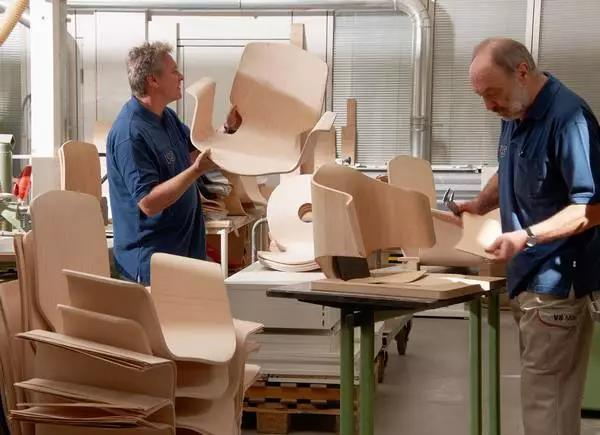A large inventory of American furniture sales: Breaking through 115 billion yuan in the whole year
Source:Sina
Lynn Franco, deputy director of economic indicators of the World Large Corporation Research Council, said, “By 2021, consumers do not believe that the economy or labor market will become strong. In addition, the return of the COVID-19 epidemic has further increased uncertainty, intensifying people’s worries about the future."
"By 2021, consumers do not think that the economy or the labor market will become strong. In addition, the return of the COVID-19 epidemic has further increased uncertainty and heightened people's concerns about the future." -Lynn Franco The Conference Board
Based on consumption and expenditure data provided by the Bureau of Economic Analysis of the U.S. Department of Commerce, U.S. furniture and bedding sales in 2020 will exceed $115 billion.
It is estimated that the sales of furniture and bedding in the United States have increased by 0.6% this year, a slower growth rate than in previous years. The main factor curbing this growth is the COVID-19 epidemic. The sales of furniture stores suffered heavy losses from March to May. In recent months, although sales and demand have been strong, most of the increases have made up for losses this spring.
U.S. bedding sales pick up
An industry forecast shows that the bedding industry is expected to rebound from the 2020 downturn, achieving 1.5% unit growth and 3% dollar value growth in 2021.
For the mattress industry, which has been hit hard by the surge in mattress imports and the challenges brought about by the epidemic, including rising raw material prices and supply chain disruptions, they are looking forward to a recovery in the market.
Sales growth next year will break the recent continuous decline in mattresses and bed frames produced in the United States.
The forecast issued by the ISPA International Sleep Products Association in November showed that the U.S. product shipments will fall by 45% in 2020. Prior to this, U.S. shipments fell 2.4% in 2018, and U.S. shipments fell 4.4% in 2019.
Similarly, the increase in the dollar value of goods produced in the United States next year will reverse the forecast that its dollar value will fall by 3% this year. According to data from ISPA, this value fell by 1.7% in 2018 and rose by 1.2% in 2019.
In 2021, the total mattress market is predicted to grow by 2%, and the dollar value will grow by 3.5%.
ISPA predicts that the renaissance of the American bedding industry will continue until 2022, with domestic product shipments increasing by 2% and total mattress shipments by 4%. Its dollar value will rise by 3%, and total mattress sales will increase by 3%.
Anti-dumping tax may promote (US) domestic mattress industry
The forecasting team decided not to consider the impact of anti-dumping and anti-subsidy investigations on imported mattresses. The targeted importing countries Cambodia, Indonesia, Malaysia, Serbia, Thailand, Turkey, Vietnam and China may affect the entire market or shipments of mattresses and bed frames made in the United States have had an impact.
American bedding manufacturers say that these investigations should be a powerful boost to the domestic bedding industry. Some people say that mattress imports may just be transferred to countries that have not been targeted.
Piper Sandler (a well-known investment bank) said that mattress manufacturers in Vietnam, Thailand and Cambodia, three countries subject to anti-dumping duties, are moving their production to Taiwan, China, Bangladesh and India. It added that due to the transfer of production to new countries and regions, mattress import prices may rise by 5% to 15%. Many domestic manufacturers have also increased prices to a considerable extent in the fourth quarter of this year.
Due to the announcement of the preliminary anti-dumping ruling, domestic manufacturers:”may see some moderate short-term benefits in the fourth quarter of 2020 and early 2021, but we expect that import conditions will return to normal in mid-2021.”
Different types of furniture stores have gained market share
This year, 12 major channels for furniture and bedding have experienced ranking shocks.
With strong performance in 2019, the market share of traditional, lifestyle and manufacturer-branded furniture stores each increased by one percentage point. All other channels, including DTC (direct to consumer) channels, remained stable compared to 2018.
In the top one-hundred furniture stores in the United States, the sales of furniture and bedding together accounted for 42% of the total sales in the United States in 2019, and the market share increased by 2% compared to 2018. The top one-hundred stores have a combined sales of 48 billion US dollars. An increase of 2.9% over 2018.
According to statistics, in 2019, the sales of the top one-hundred furniture stores accounted for 85% of all furniture store sales. The top one-hundred includes stores in three furniture channels: traditional, lifestyle, and manufacturer brand furniture stores. The traditional store channel is led by Houston-based Mattress Firm, Rooms To Go, and Berkshire Hathaway furniture stores.
Subdivisions worth looking forward to in the next 5 years
According to the joint estimation of Today Furniture and EASI analysis software organization, by 2025, the US furniture and bedding market will exceed 143 billion US dollars, an increase of 24.4% in the next five years.
In 2025, sales of fixed armchairs are expected to jump 29.5% from US$2.4 billion to US$3.1 billion, the largest increase.
With the increasing popularity of remote office, the sales of desks will also grow rapidly. It is estimated that by 2025, sales of desks will be close to 7 billion US dollars. Among all furniture and bedding categories, this 25.5% increase is the highest, second only to fixed armchairs.
From 2020 to 2025, the national furniture and bedding sales are expected to increase by 24.4%. Sales in 18 states in the United States are expected to exceed this number.
Utah is far ahead in this regard, with sales expected to grow by 28.2% in the next five years. Idaho and the District of Columbia followed closely behind, each with an estimated increase of 27.2%.
Consumer confidence is worrisome
Due to the gradual recovery of economic activity that had previously been depressed by the epidemic, the unemployment rate fell to 6.9% in October. Remarkable benefits have been achieved in the entertainment service industry, retail trade, professional services and business services, and construction. According to estimates by the US Bureau of Labor Statistics, home furnishing stores added approximately 14,000 jobs in October.
But the imbalance in household income levels is increasing.
In general, nine of the top ten states with the fastest household income growth are in the west, with the exception of North Dakota.
In 2019, the median household income in the United States rose to US$68,703, an increase of 6.8% over 2018. In the next year, household heads under the age of 25 received the largest increase in household income, with a growth rate of 8.2%. The income of the heads of households aged 35-44 grew steadily, at 8.1%.
The median income of households in the western region increased the fastest, reaching 7%, and the median income of households in the central region increased by 4.8% the slowest. The median income of households in the South increased by 6.1% from 2018 to 2019, and households in the northeast developed better, with an increase of 6.8% over the same period.
The consumer confidence index was flat at 101.4 in October, and fell to 96.1 in November. The expectation index, that is, consumers' short-term outlook on the market environment, also fell from 98.2 to 89.5 in November.
Lynn Franco, deputy director of economic indicators of the World Large Corporation Research Council, said, “By 2021, consumers do not believe that the economy or labor market will become strong. In addition, the return of the COVID-19 epidemic has further increased uncertainty, intensifying people’s worries about the future."





 沪公网安备31010402003309号
沪公网安备31010402003309号



